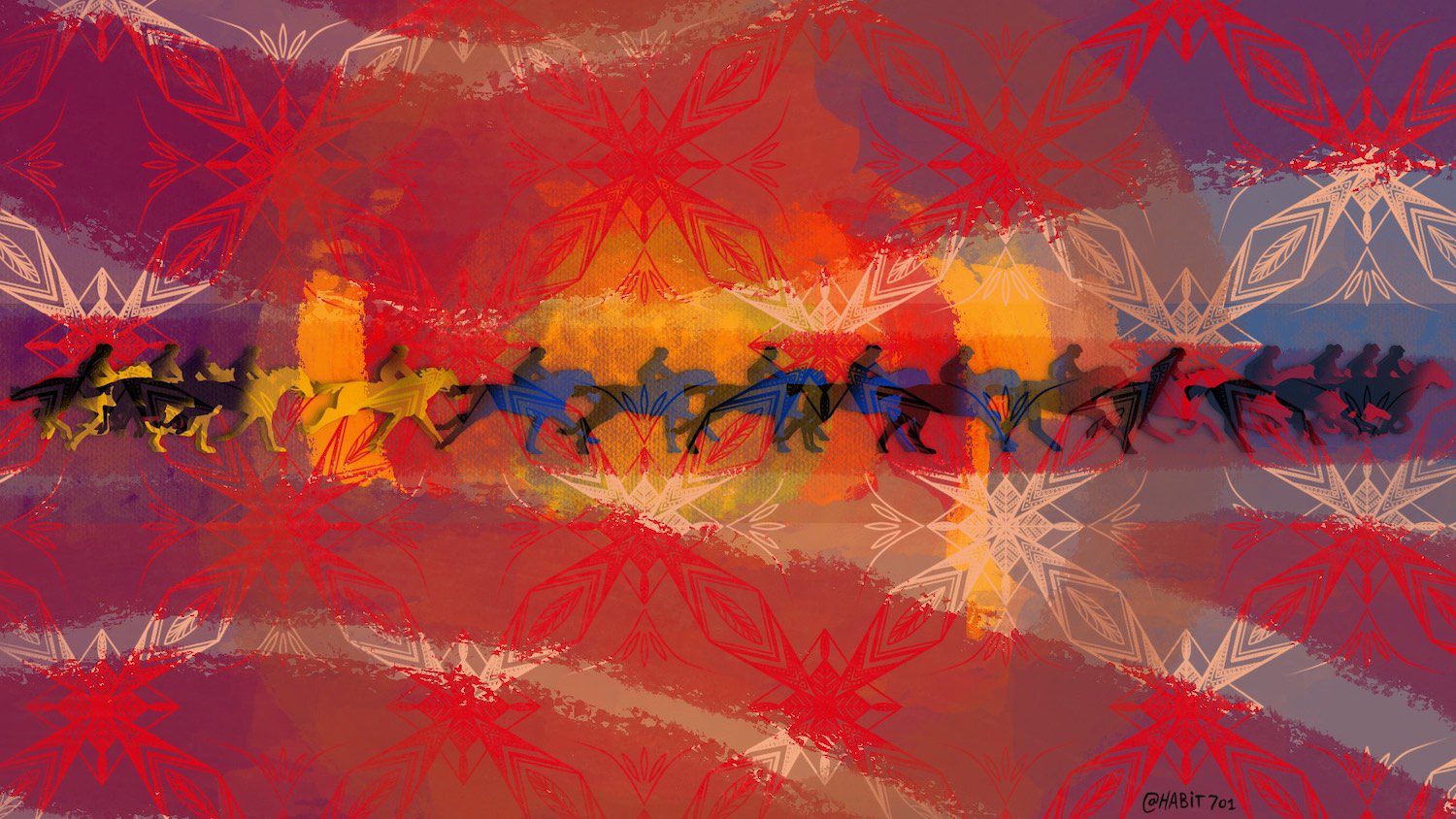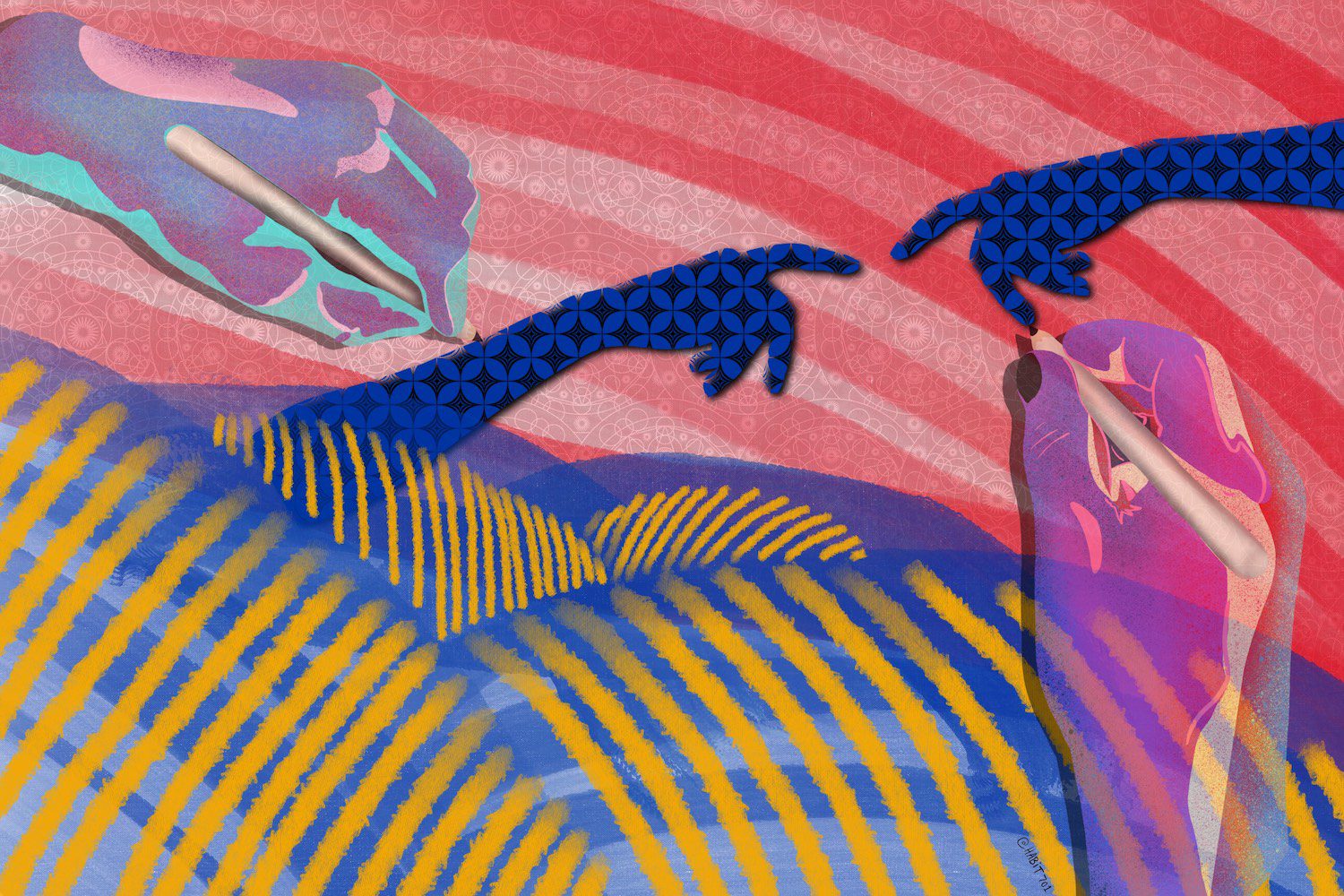We Are More is an inclusive space for SWANA (Southwest Asian and North African) and SWANA diaspora writers to tell our stories, our way. Curated by Michelle Zamanian, this new column seeks to disrupt the media’s negative and stereotypical narratives by creating a consistent platform to be heard, outside of and beyond the waxing and waning interest of the news cycle. We’ll publish creative nonfiction, graphic essays, fiction, poetry, and interviews by SWANA writers on a wide variety of subject matter. All prose submissions should be between 1500-5000 words. Poetry submissions should include 4-8 poems for consideration (up to 12 pages). Please inquire for interview guidelines. Submissions should be sent to michelle@therumpus.net with author’s name and title/genre of work in the subject line.
***
I’ve been explaining the Armenian Genocide all my life. My mother immigrated to the United States from then-Soviet Armenia at nineteen, and met my father—a white, Midwestern transplant—working at Sears in Hollywood. Because I grew up in a desert suburb far from any Armenians, many of the family stories I heard growing up had to do with a place none of my friends at school knew existed.
“It’s the place where Noah’s Ark landed,” I tried, but I should have known better. Those fully American children I called friends would focus on the pairing of the animals, that lusty embargo against loneliness. I wanted to pay attention to something else in the story: the difference between surviving and living, the way a shipwreck could signal deliverance. “See,” I’d go on, “there was a genocide in 1915.” But even my kindest friends would change the subject after a few solemn, helpless nods.
This summer, at the age of thirty-two, I traveled to Armenia for the first time and visited the Genocide Memorial and Museum in the hills above Yerevan. The capital city was celebrating its 2,800th anniversary, and on clear days, while I was there, I could see across the glinting valley to the white-capped twin peaks of Mount Ararat, Noah’s supposed landing site.
At the Genocide Memorial, an asymmetrical, double-pointed tower casts its clock-hand shadow across the grounds and visitors on one side of a tree-lined plaza. At the plaza’s far end, a Stonehenge-like structure made of twelve enormous slabs of black stone configure in a circle, each leaning at a steep angle toward a shared and distant center. To enter, you have to descend a set of steps hidden between the slabs, and to descend, you have to bow your head. In this way you arrive at the eternal flame—which has been burning at the memorial’s center since its dedication in 1968—in a position of humility, even supplication, not unlike a reader over a book.
When I arrived, others had left wreaths and remembrances beside the fire. What came to mind was not the unimaginable number of Armenians—one and a half million—killed or disappeared in the genocide, but a memory of a memory: my great-grandfather, hidden in the limbs of a tree, watching his own father’s beheading. Now, a century later, I stared into the flame considering this generationally exponential helplessness I’d inherited, this indirect but animating grief.
Soon, I was led away from the memorial into the nearby museum for a guided tour. The docent shepherded a dozen of us to the first of many multimedia information stations. She was an Armenian of about my age, which meant she belonged to the first generation raised in an independent, post-Soviet Armenia. She led the tour in an accented but grammatically pristine English, and I paid attention to her in a way she couldn’t have possibly paid attention to me. To her, I must have looked indistinguishable from the European tourists in my group, or from one of my colleagues back home who, reading my grant proposal, had never heard about the Armenian genocide. This docent spoke to me—to us—as if we were equally new to the subject. At every enumerated station—from the larger Ottoman context leading up to the violence, to the Hamidian massacres at the turn of the century, from the arrest and torture of Armenian intellectuals to the forced marches in the Syrian desert and the child refugees—our docent carried herself with the dispassionate instructionism of an HR rep going over our downgraded benefits. At several points in the tour, she interrupted her memorized recitation to scold teenagers speaking loudly behind us. I turned back to look at the walls, where grainy photographs of emaciated children had been beamed and blown up. Damningly, I felt a more acute pity for the scolded teenagers, who had come to Armenia to eat good food, to listen to good music, and to meet a local girl or boy, maybe, with whom they might strike up a global summertime romance.
The docent returned to her memorized script, and I remembered my own family’s renditions of these sad facts. Why was I failing to feel what I’d felt before and what the docent so clearly wanted me to feel again, so close to the source of all that pain? It was as if I’d gone from a participant to a spectator—but hadn’t I always been just a recipient of my family’s stories? A listener? What had changed? I still cared immensely about the facts recounted by the docent, still understood the enumerated stations to be a major chain in the amino acids that made me who I was. And yet, I felt—what? Cold? No—I felt annoyed and bitter, for being condescended to, for being treated like a tourist who’d chosen Armenia as a destination by flinging a dart at the map, for being mistaken for someone outside of the story. My anger then flickered to shame—how could I be thinking about my own experience when I was being presented with this enormous suffering?
It was the same problem I’d encountered with my friends at school, and the same problem I’d struggled with while writing The Gimmicks, which is set in Armenia and the United States in the generations after the genocide. It seemed to me that a novelist could be a docent or an artist—that a story could prove or it could move, but it couldn’t do both.
Still, how can we blame any writer for wanting to try? To show the truth when the truth is so readily denied, or—not worse, but painful in its own way—ignored, forgotten, or treated ambivalently? I, too, feel the impulse to expose genocide deniers for the shameful frauds that they are. But in writing a novel, I needed to use that impulse in oblique ways. Yes, my novel needed to say, the genocide happened; yes, Turkish erasure of the truth—the final, “perfecting” stage of genocide, as Bernard-Henri Lévy writes—is painfully ongoing. And yet: now what? What do we do with our denied pain? How do we live meaningful lives when one of the pillars of our identity is called into question? What might justice look like? What happens to indignation when it’s inherited, generation after generation? Where, in that busy grief, can we make a place for joy?
It occurred to me that the problem was a problem of tone. What magical blend of outsider inquisitiveness and insider authority might invite my readers to participate in the story rather than to simply receive it? For me, the solution came when I invented a bifurcated narrative voice: one perspective emerging from the story, and another delving into it. The braiding of the two was the closest I could get to what I felt entering the memorial’s twelve stone slabs: to enter was to intertwine with it. My wordless encounter with the stone and the flame redirected not only my physical but also my psychological and emotional postures. The memorial didn’t explain a thing. Instead, it asked what I’d carried all this way.
In the museum, the docent bid us farewell. She had to take her twenty-minute break before the next tour. It was a difficult job, it occurred to me, to be forced by denialism and ignorance to explain great pain again and again, without an end in sight. Suddenly her memorized, dispassionate method made sense to me. Much more sustainable, probably, to relay our pain than to relive it. A protection novelists can’t rely on.
***
Rumpus original logo art by Mina M. Jafari. Additional artwork by Abdel Morched.







